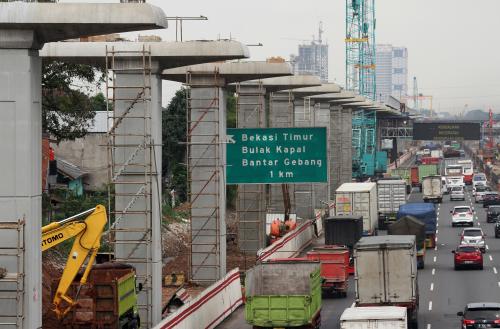No one should have been surprised when Environmental Protection Agency Administrator Carol Browner proposed to tighten the National Ambient Air Quality Standards (NAAQS) for ozone and particulate matter. Nor should it have occasioned surprise when the Office of Management and Budget chose not to challenge the proposal despite the president’s 1993 executive order requiring a demonstration that the benefits of any new regulatory proposal exceed its costs. One might have been surprised to find, however, that the EPA itself admitted that the benefits of additional controls on one of the pollutants are far less than their additional cost–and even more surprised that EPA now would admit that even its current standard for this pollutant fails a benefit-cost test. More frightening, however, is the fact that EPA now admits that full compliance with either new proposed standard is virtually impossible; therefore, its proposals for each are impossible dreams backed by the threat of sanctions on the states that do not achieve those dreams.
This overreaching in the name of protecting us from the evils of an advanced post-industrial society graphically illustrates the need for regulatory reform of the variety unsuccessfully championed by Senator Robert Dole in the 104th Congress, requiring that all regulatory activities of the federal government pass a benefit-cost test. It also shows how difficult it is to bring rational debate to the process of regulating against threats to health and safety. Challenging an environmental proposal on the basis that its benefits do not outweigh its costs is almost as difficult as challenging the method for indexing Social Security benefit levels. Still, it is essential that we try, if only to lay the groundwork for a more rational approach to such problems in the millennium ahead.
The Pollutants
Lester Lave has already described the two pollutants at the center of this debate. Controlling photochemical smog, or its primary constituent, ozone, requires controls on volatile organic compounds (hydrocarbons) and nitrogen oxides emitted by transport vehicles and by industrial and utility sources. The particulates standard affects a variety of industrial and utility sources. To achieve the NAAQS for these two pollutants requires emissions reductions that vary enormously across the country because of variations in atmospheric conditions, population density, and industrial structure. Some areas, such as the Los Angeles basin, cannot even achieve current standards, much less meet the more ambitious standards now proposed. For this reason, EPA’s analysis of the new standards is laced with references to “partial attainment.”
The two pollutants involved in this controversy–ozone and particulates–are of considerable interest to students of and propagandists for environmental policy. Photochemical smog, or its primary ingredient, ozone, has always been at the center of the fight against air pollution and the allied battle against the sins of the automobile. The Department of Health, Education, and Welfare first set emission standards for new cars in 1968. In 1970, Congress legislated further reductions in allowable pollution from new cars, which EPA delayed somewhat in response to pleas from the automakers. The standards were once again tightened in the 1977 Clean Air Act Amendments.
Despite considerable evidence that the health benefits from controlling photochemical smog are extremely limited and reversible, yet another acrimonious debate led to further tightening of new vehicle emission standards in 1990. Congress once again ratcheted them down, even requiring automakers to produce zero-emission vehicles in markets not meeting the NAAQS for smog or other vehicle-related pollutants. More cost-effective approaches, such as taxing older, dirtier cars, were ignored, as was the evidence that any further reductions in new-vehicle emissions would cost far more than they were worth.
Last year, in response to a congressional mandate, EPA produced a study of the benefits and costs of all air pollution controls imposed between 1970 and 1990. The study, still in draft form, essentially concludes that controls on all automobile-related pollutants have contributed only 0.5 percent of the benefits from the Clean Air Act. The other 99.5 percent are due to particulate matter and lead controls. For all intents and purposes, EPA now concedes that 20 years of beating up on motor vehicles have generated very little value to most Americans.
The particulate standard reflects a new assessment of the dangers posed by inhaling ne, respirable particulate matter. The controversy surrounding the health effects and the scientific studies that have identified them has be-come the centerpiece in the debate over the EPA proposal. Resolving this controversy is also crucial to justifying the entire clean air program, not just recalibrating this one standard. EPA’s own retrospective assessment, citing precisely the same studies, claims that roughly two-thirds of the benefits of the entire program derive from controls implemented for coarse particulates. If these studies are shown to be misleading or invalid, how can EPA justify even the current controls?
Ironically, the argument for the ne particulate standard may now be used to provide an ex post rationale for the 1990 Clean Air Act’s mandate for reducing sulfur-oxide emissions by 10 million tons over two decades. Although the mandate was based on the purported need to reduce “acid rain,” Congress had already received the results of a 10-year, $500 million study that rather decisively laid to rest any argument that such a reduction is justified. The damage caused to forests, lakes, or streams by acid sulfates created from acid rain was far too small to justify the $1 billion to $5 billion per year costs of additional sulfur-oxide abatement. But now the acid-rain justification gives way to health threats posed by ne acid particles and, voila, we have a reason for justifying the 1990 Act’s 10-million-ton reduction after all.
Costs and Benefits of the New Standards
Virtually all the benefits from EPA’s proposal derive from the new particulate standard. The tightening of the ozone standard involves a shift in the averaging period that may be justified, but the benefits and costs are relatively small compared with those of the particulate standard.
EPA estimates that even “partial attainment” of the new ozone standard increases costs by $0.6 billion to $2.5 billion a year. (Not even EPA deludes itself about the prospects of Los Angeles achieving the current standard, much less the revised one.) Compliance with a tighter ozone standard will mitigate the threat of reduced pulmonary function, primarily to people exercising or working outside on warm summer days when smog forms. This reduction in lung function is reversible and not serious in most Americans, though for a few with severe respiratory problems it may be more important and may even put them in the hospital. EPA’s own estimate of the benefits from just partial attainment is less than its estimate of the costs by as much as $2.4 billion a year. Indeed, even EPA concedes that the potential benefits from this tightening range from $0 to $1.5 billion a year. This is a striking admission–that there is at least some probability that asking us to spend another $0.6 billion to $2.5 billion a year will generate no benefits and a zero probability that the benefits will exceed the cost.
Even more striking, EPA concedes that further compliance with the current standard is not worth the additional costs. Indeed, EPA does not even claim that all the current “nonattainment” areas can meet the current standard. But it estimates the benefits of forcing compliance on some areas not now meeting the standard to be only $0.1 billion to $0.8 billion a year while it estimates the costs of such further “partial attainment” to be $1.2 billion a year. Surely EPA, based on its own analysis, should withdraw its proposal to tighten the ozone standard and admit that a rollback is urgently required.
Fine Particulates and Early Death
Clearly, the proposal to tighten air quality standards hangs on the ne particulate proposal. And that proposal is even more controversial than the ozone standard because of difficulties involved in translating epidemiological data into sound, health-based policy. EPA relies heavily on a battery of recent studies of daily air quality in many large cities. It also cites a few longer-term studies in which various measures of air pollution are correlated with excess mortality rates. These studies document a statistically significant relationship between local pollution and mortality.
Unfortunately, atmospheric conditions cause the levels of most pollutants to rise and fall together, making it difficult to associate the increase in mortality with any single pollutant. But a spate of recent epidemiological studies performed by a small number of researchers generally finds that the level of particulates (coarse or, sometimes, ne) seems to be more closely correlated with these changes in daily mortality than are variations in other pollutants. These results are extremely controversial despite EPA’s repeated claims of a scientific “consensus” on the matter. Even EPA’s own Clean Air Scientific Advisory Committee, an outside board of advisers, split badly on whether EPA should set a ne particle standard given the available evidence. Two of the twenty-two members found the evidence insufficient to support any ne particle standard. Eight others declined to select a range for the standard, presumably because they felt that the evidence was not sufficiently robust to do so. Seven others supported setting the standard at the upper end of EPA’s recommended range–that is, the less stringent end. Only four of the twenty-two were willing to sign on to a standard in the more stringent range of EPA’s proposal.
Curiously, no one knows why the correlation between ne particles and early death exists because no one has found laboratory or clinical evidence of such dire effects of particulates at anything like current levels. Indeed, many health scientists have cautioned against moving too rapidly in limiting ne particulates until the science underlying such an attempt to protect human health is better understood.
A Fine Irony
All this is a bit ironic to most students of environmental policy. Usually, regulators are eager to press ahead on the basis of experimental scientific evidence–often from studies on animals or simpler organisms–on cancer risks or some other human health threat, only to be chided for not having any credible statistical evidence that human beings truly are at risk. In today’s debate over ne particles, the regulators have a battery of statistical studies that find some association between premature deaths and air pollution that they cannot explain scientifically.
Going ahead with the regulations would be very costly–even EPA estimates “partial” compliance with the proposed standard at between $2 billion and $14 billion a year. The benefits could be far less, particularly if the statistical correlation between death rates and particulate levels proves spurious. One might ask, for example, how so many people could be killed on days of high particulate levels unless they were already at death’s door from circulatory or respiratory disease. But would not such people be indoors? Surely people about to die from congestive heart failure are not typically out in the park for a walk. Perhaps, as suggested elsewhere, the spurious correlation reflects premature mortality caused by elevated levels of indoor pollutants that rise and fall with the level of outdoor pollutants because of atmospheric conditions, but have a different chemical composition.
Whatever the cause of the observed correlation between outdoor air pollution and premature deaths, there is insufficient evidence on the level of ne particles to link them to these day-to-day variations in mortality. EPA and the states have not been collecting data on ne particulates long enough in most areas. For this reason, studies generally use data on total particulates, not just the finer ones, in their statistical regression analysis.
Finally, it must be noted that EPA’s analysis of the benefits from setting a tighter and a finer particulate standard assumes that society values a premature death from exposure to these particles exactly as it values the loss of a healthy, working-age adult who may have 30 to 50 more years to live. But surely someone who dies from temporarily elevated levels of ne particulates must be measuring his or her life expectancy in weeks or months, not years. Thus EPA’s calculation that the potential benefits of a tighter particulate standard range from $22 billion to $192 billion a year is wildly exaggerated. A reasonable value for the weeks or months of additional life might reduce this estimate to one-tenth of EPA’s estimate or even less.
Defenders of EPA’s proposals emphasize that the Clean Air Act requires EPA to protect the health of our citizens from the dangers of air pollution without regard to the costs of such protection. Simply put, benefit-cost analysis is irrelevant. This has been a central aw in virtually all environmental policy that only Congress can correct. However, when the costs of any regulation per early death averted reach a level of, say, $40 million or $50 million, such a regulation actually increases early deaths by withdrawing resources from health care, nutrition, education, and other human consumption. Thus, even under the current Clean Air Act, EPA would be well advised to take costs into account. And when it admits that the benefits from its proposed ozone standard may be as little as $0, it is admitting that such a standard will increase premature mortality by withdrawing $0.6-2.5 billion worth of resources from the economy.
Unattainable Goals
Perhaps the most serious long-term consequence of proceeding down EPA’s path toward tighter ozone and particulate standards is that the standards are unattainable. Once again, we will have EPA using the example of Los Angeles to tighten the ozone standard when it knows that LA cannot possibly meet the current standard. Thus the truly polluted urban areas will not be affected by the new standards, but the cleaner areas of the country will. Moreover, those areas unable to comply with an unattainable standard will be subjected to federal EPA’s arbitrary threats, such as withholding federal highway monies. EPA is not an independent regulatory agency–its management serves at the pleasure of the president. It should not be allowed to set unachievable goals so that it can then process enforcement actions on a capricious and even partisan basis. If EPA proceeds to implement these unattainable standards, Congress can and should overrule this substantial abuse of what is already an abuse of the nondelegation principle valued by the Founding Fathers. Of course, such an override would succeed only if it carried both houses by two-thirds majorities because the president would surely veto this rejection of his appointee’s most important policy proposal.



Commentary
The Costly Pursuit of the Impossible
June 1, 1997